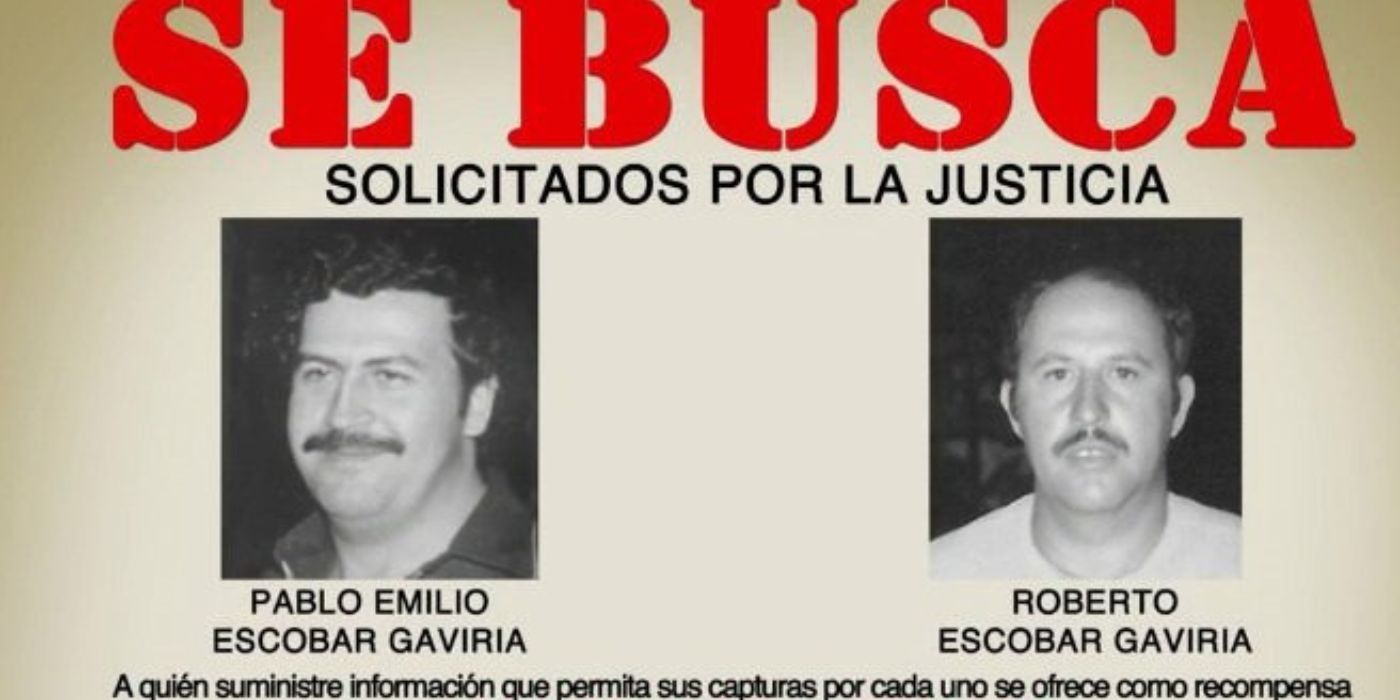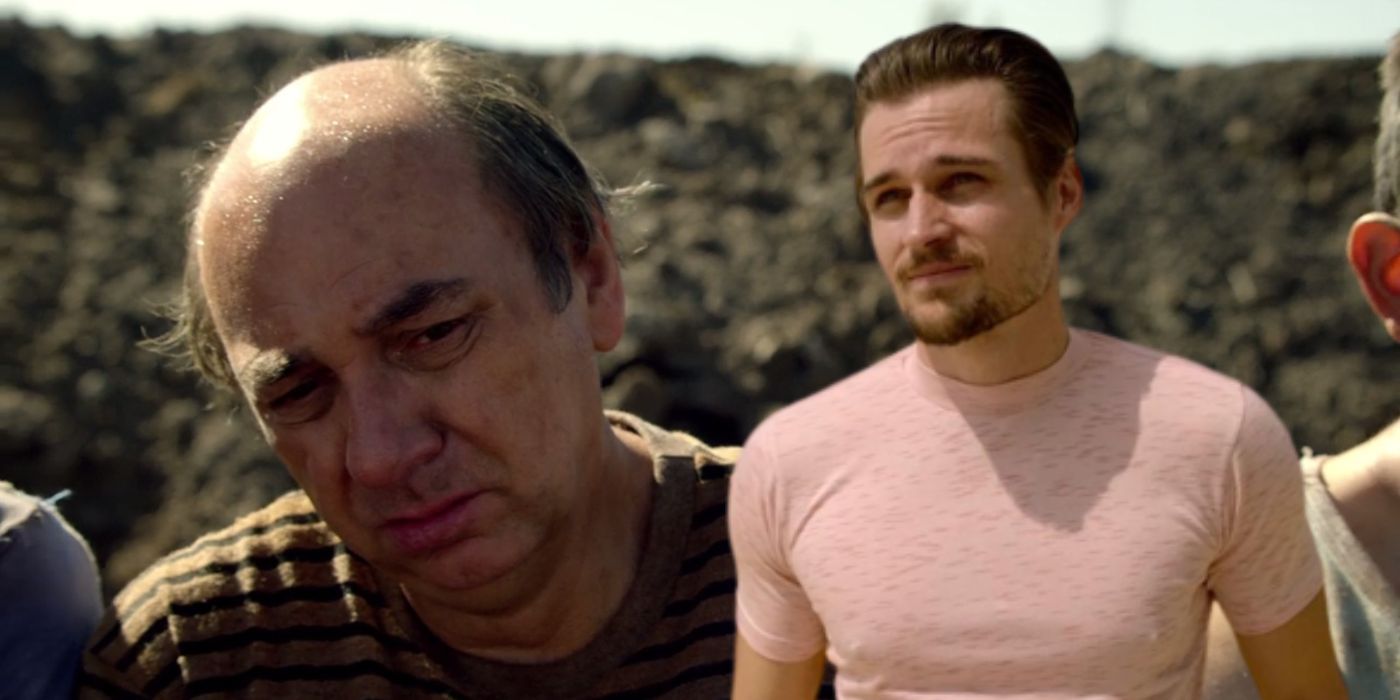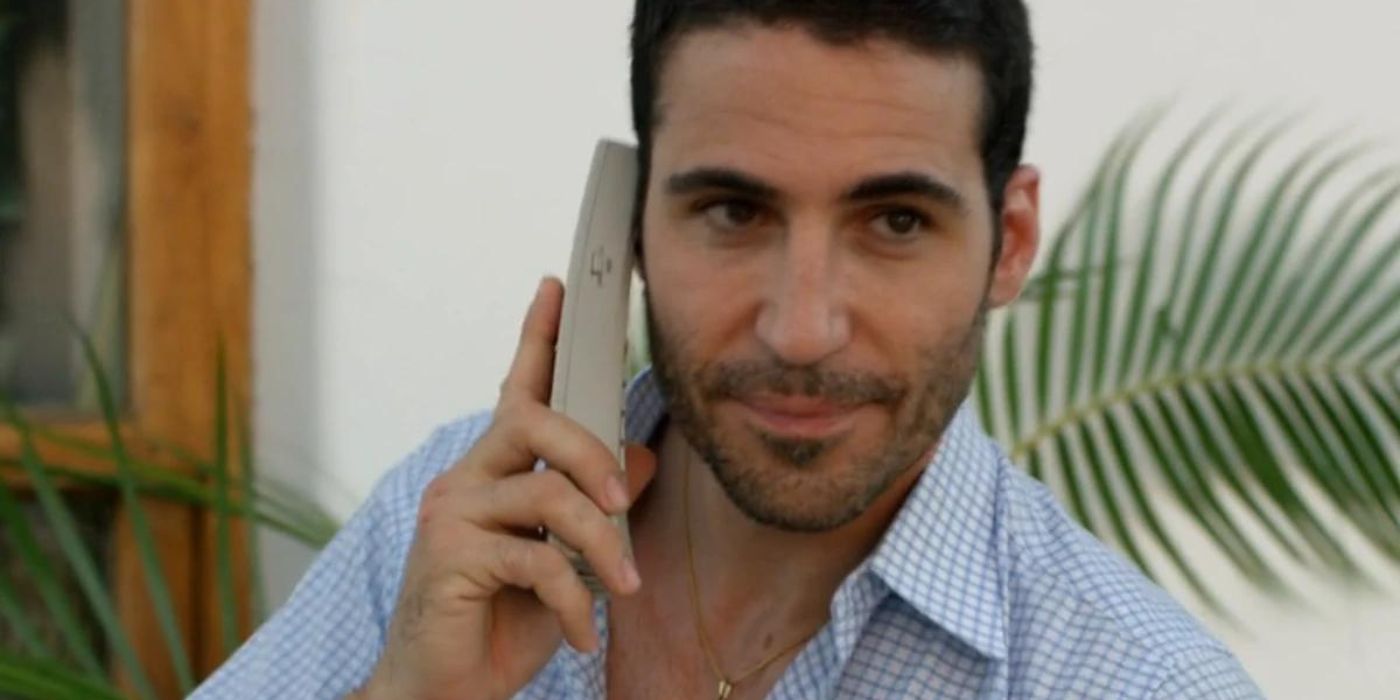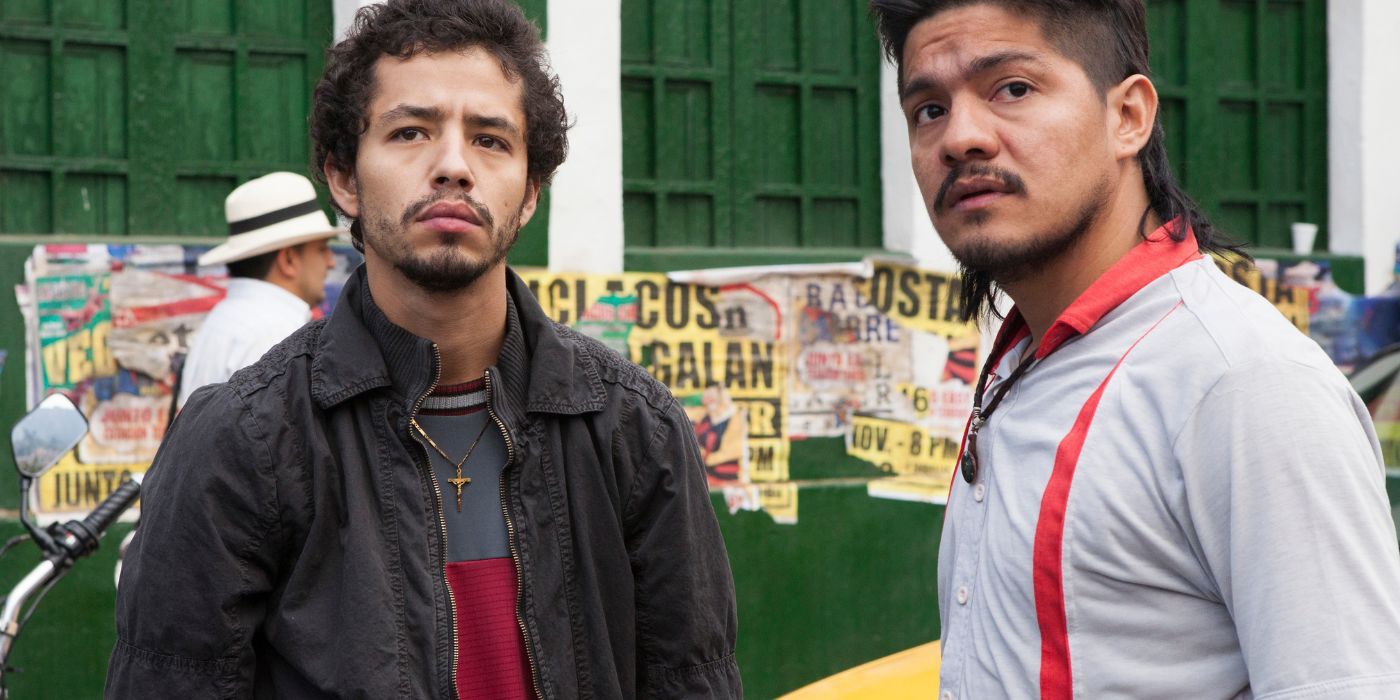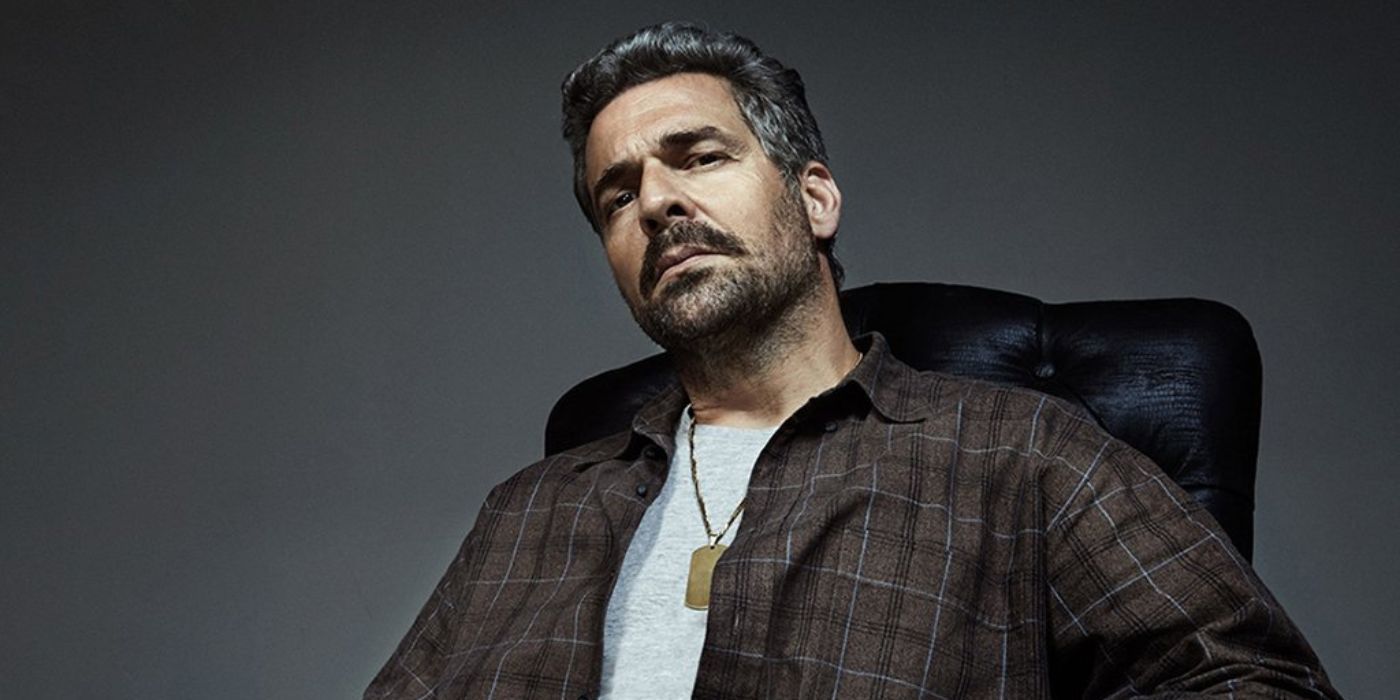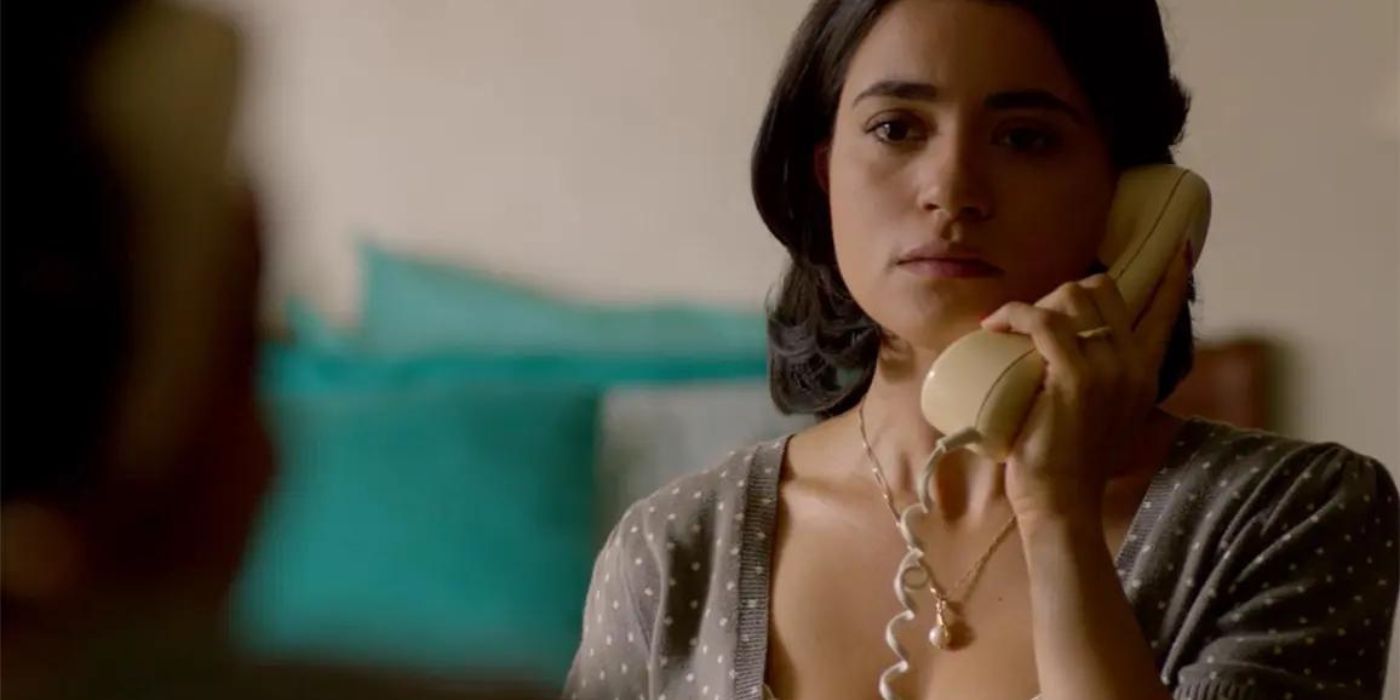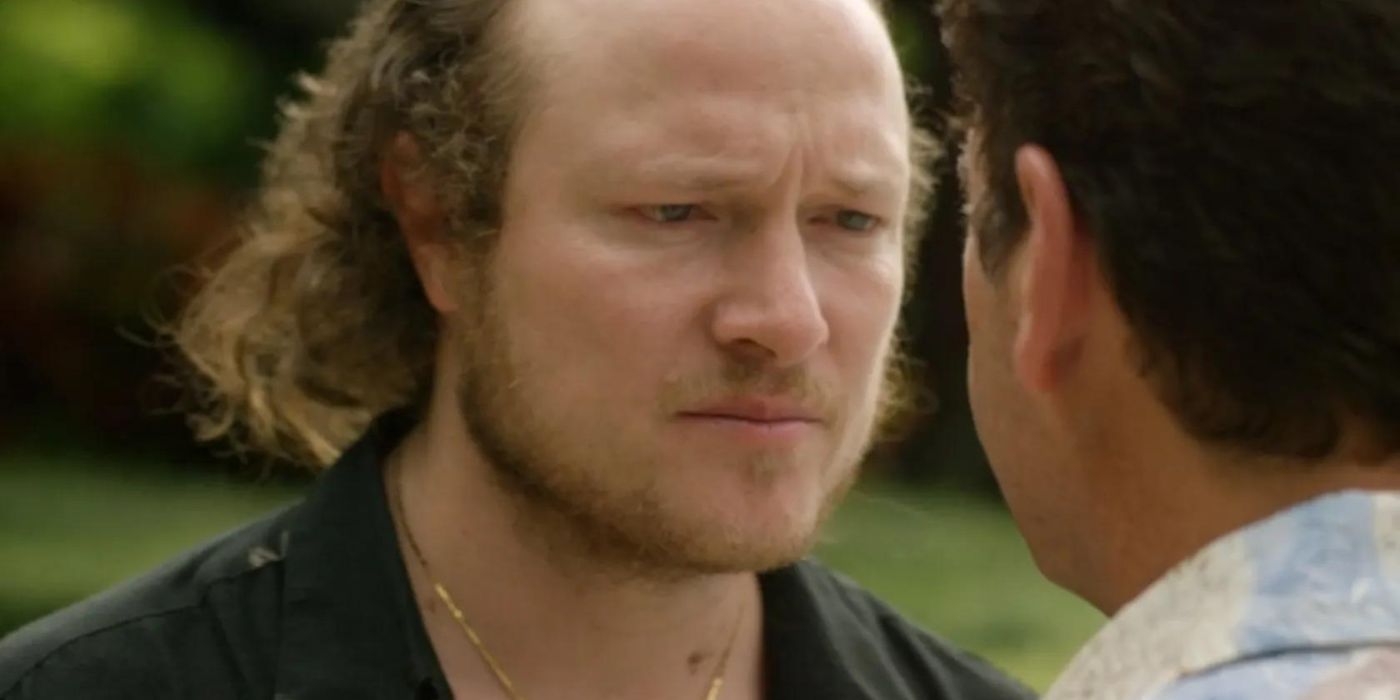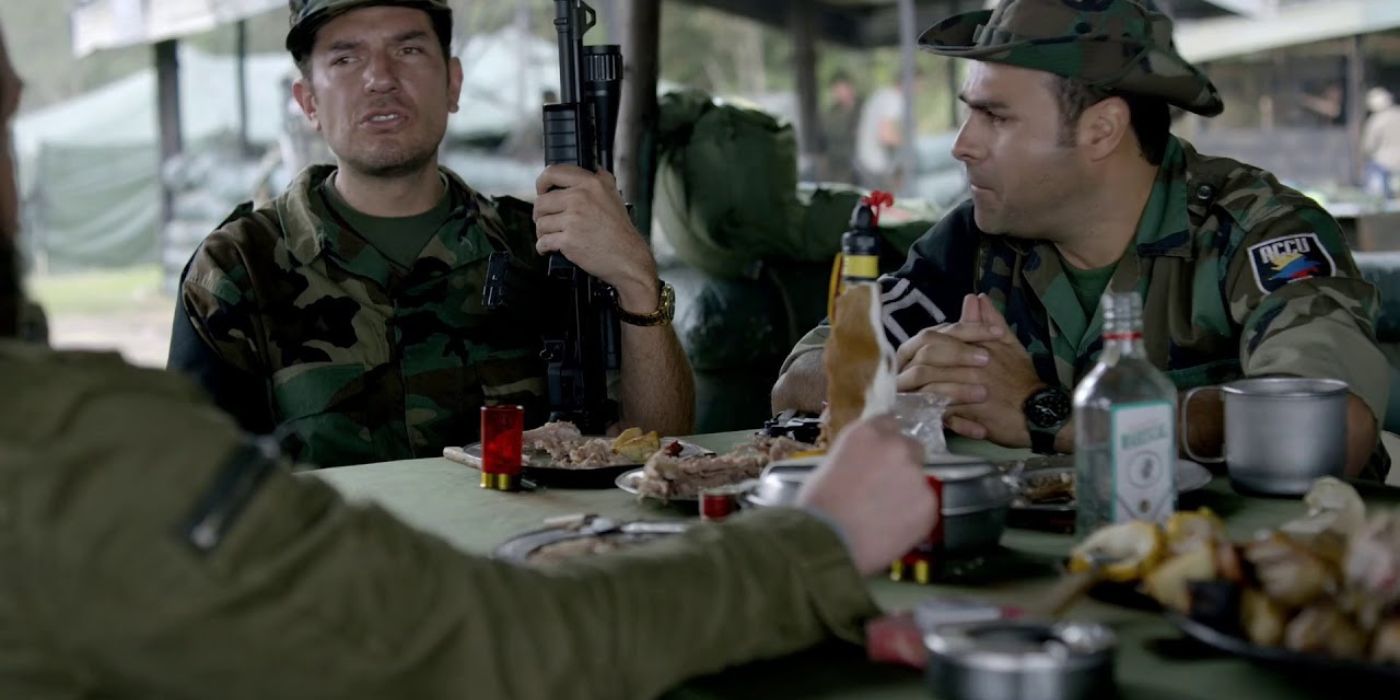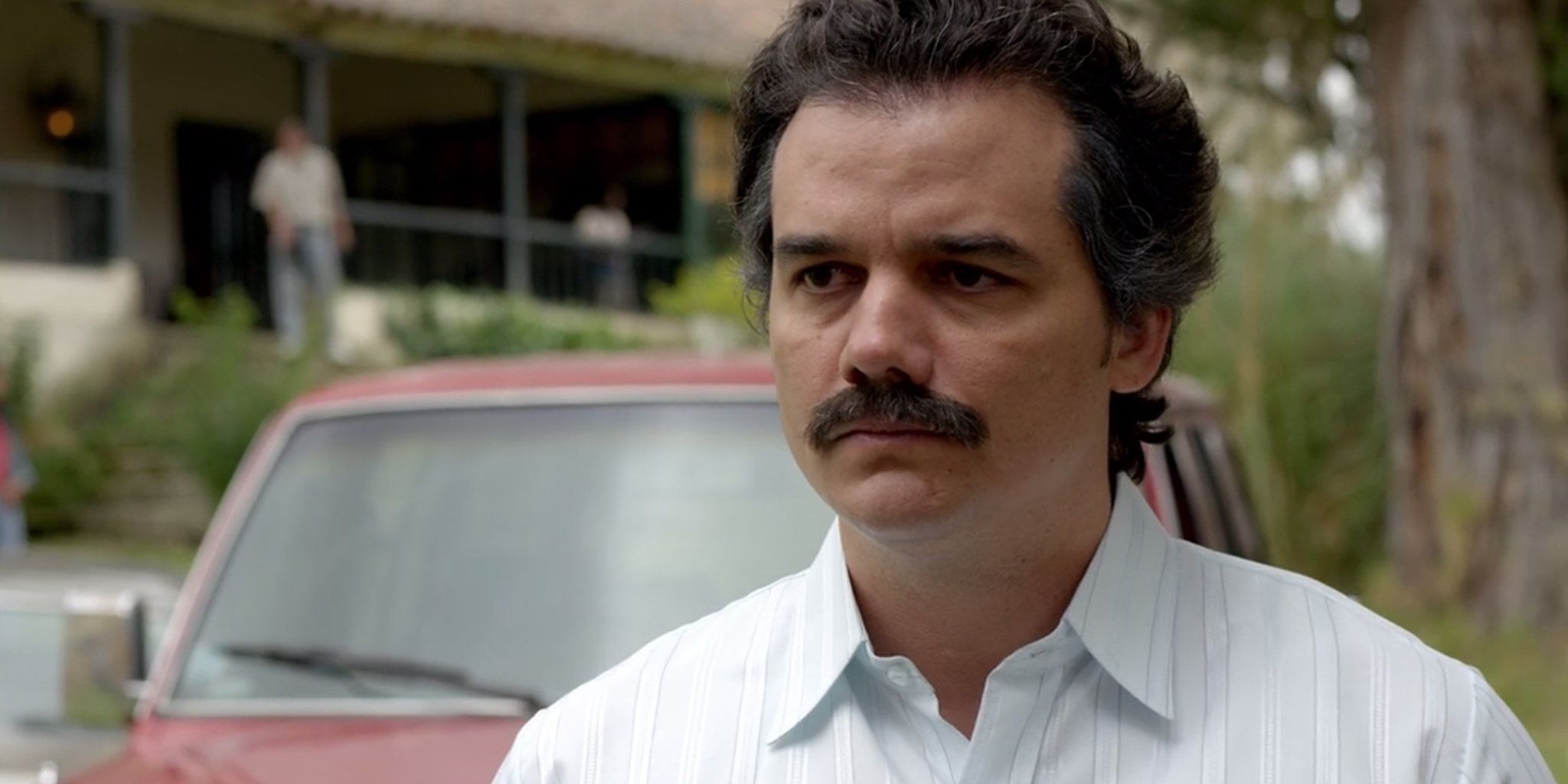Summary
- Narcos took creative liberties with the real-life story of Pablo Escobar and the drug trade in Colombia, including changes to chronology and the details of some events and characters.
- Pedro Pascal’s character, Javier Peña, was not actually involved in investigating the Cali Cartel, despite the show’s depiction.
- Many characters in Narcos had their names changed, and the show inaccurately depicted the deaths of some characters, including Jose Santacruz Londoño and Roberto Escobar.
Dramatizing the rise and fall of Colombian drug lord Pablo Escobar and his associates, Netflix’s Narcos recreated a turbulent era in modern history even if the show did make some major changes to the real-life story. In its three-season run, Narcos chronicled the rise of drug kingpins like Escobar in 1980s-era Colombia and went on to capture the efforts by law-enforcement authorities to nab them up until the 1990s. Beyond the specifics of the drug trade, the wildly successful Netflix original incorporated many other socio-political elements that changed the face of South America in the 20th century’s final decades.
Just like other shows that draw inspiration from true stories, Narcos takes its fair share of creative liberties. While most of these changes don’t misrepresent its central characters, history experts would be quick to pinpoint the chronology of some events. As for Escobar’s associates and the men pursuing him, some of their details are also altered. This includes not only their real names but also their fates. Considering how some of these real-life personalities have had their lives documented in secret security files, it’s not surprising that Netflix had to play with the truth a bit when it made Narcos.
10 Javier Peña Wasn’t Involved In The Cali Cartel Hunt
Pedro Pascal’s Lead Role Required Some Inaccuracies
After a popular stint as former American DEA Agent Javier Peña, Pedro Pascal left Narcos after season 3. However, his character remained integral to the show for his contributions to hunting down the associates of the Medellín Cartel and later the Cali Cartel. Eventually, Peña reveals the deep-rooted corruption within the Colombian government itself. This heroic character’s real-life counterpart, however, wasn’t involved in investigating the Cali Cartel (as per an interview with him on Grazia).
Peña was indeed a DEA Agent who later took down the Medellín Cartel as depicted in the first season, but his activities against the Cali Cartel were fabricated. It is not hard to see why this change was made as Pascal was one of the standout aspects of Narcos‘ first season. In order to keep him as part of the series beyond Escobar’s story, the reality of Peña’s career had to be altered. With neither Boyd Holdbrook nor Wagner Moura returning for the third season, Pascal was elevated to the show’s lead, which raised his Hollywood profile.
9 Narcos Season 1 Leaves Out Roberto Escobar
The Drug Lord’s Brother Is Still Alive
While Narcos revolved around Pablo Escobar and the Medellín Cartel, the debut season surprisingly made no mention of Pablo’s brother, Roberto Escobar. Much like his now-deceased brother, Roberto was involved in the drug trade. In fact, he was the co-founder and accountant for the Medellín Cartel. He now admits that he has left the cartel life but still owns the copyright Escobar Inc. Ironically, despite him not being featured at all, Roberto demanded that Netflix pay him $1 billion for capitalizing on his family’s story (as reported by Fortune).
It would have been interesting to see more of the family angle of Pablo’s life and how his brother might have been involved in the operations. However, the show always sought to depict Pablo as leading a somewhat lonely and isolated life thanks to his line of business. Having his brother working alongside him would have hurt that aspect of the show. Still, the fact that Roberto survived and is still alive would have made him a fascinating addition to the series.
8 Cockroach And Lion Are Fictional Characters
The Two Crime Figures May Have Been Based On Existing People
The double-crossing Medellín Cartel co-founder and Chilean chemist Cockroach, aka Mateo Moren,o was a character created for Narcos, although it’s highly probable that Escobar faced many such treacherous enemies. As for The Lion, the American cartel member in charge of operations in Miami, he too was fictional. However, the character is most likely to be inspired by real-life American drug trafficker George Jung.
Much like The Lion, Jung smuggled cocaine into the United States for the Medellín Cartel in the early 1980s. A more detailed look at his life is offered in the 2001 biopic Blow, in which actor Johnny Depp played Jung. Composite characters are not unusual for movies and shows that are based on true stories.
While there is likely a lot of information confirming there were characters like this in Escobar’s world, there were perhaps too few details to shape accurate characterizations. By blending elements of real people with fictional narratives, the show has more freedom with how the characters are used.
7 Franklin Jurado Didn’t Die In Jail
Jurado’s Story Was Much Less Brutal
Franklin Jurado is introduced as the Colombian banker who handled the Cali Cartel’s accounts and money laundering operations up until his death in 1994. In Narcos, Jurado’s life comes crashing down when Javier Peña arrests him in Curaçao, also in 1994. The banker eventually gets killed by cartel members in an American prison that very same year. These later details clearly were added for dramatic impact as the real-life Jurado was actually arrested in Luxembourg in 1990 (as per the US Law website Justia).
While Jurado did go to prison, he didn’t die there as he was released for good behavior just two years after his sentence. This is a very drastic change to make to the fate of a real-life figure in the story. It makes for an intense end for the character while saying a lot about the cartel. Not only did they want to cut out any loose ends that could hurt them, but they were able to get to anyone anywhere.
6 A Lot Of Narcos Characters Had Changed Names
This Was Likely To Avoid Legal Repercussions
Among the many things that Netflix’s Narcos altered, names were among the most frequent changes. For instance, the Medellín Cartel sicario, La Quica, was revealed to be Juan Diego Díaz. Multiple sources, like a detailed Westword story from 2001, reveal that La Quica’s actual name was Dandeny Muñoz Mosquera. Similarly, Navegante’s real name was Cesar Yusti, and not Jorge Velazquez. In the sophomore season, Escobar’s loyal sicario and chauffeur, El Limón, is revealed to be Jhon Burges even though his real name was Alvaro de Jesús Agudelo.
The name changes were not just reserved for the members of the cartel, but also for some of the people on the law enforcement side. DEA Agent David Mitchell is featured accurately in season 3 but under the name Daniel Van Ness. While it might seem odd for a TV show based on a true story to turn real-life characters into fictional ones, this is often an approach taken to avoid certain legal issues with using real names, instead creating characters who are “inspired” by these real figures but with new names.
|
Narcos Character |
Actor |
Real Name |
|---|---|---|
|
Juan Diego Díaz |
Diego Cataño |
Dandeny Muñoz Mosquera |
|
Jorge Velazquez |
Juan Sebastián Calero |
Cesar Yusti |
|
Jhon Burges |
Leynar Gomez |
Alvaro de Jesús Agudelo |
|
Daniel Van Ness |
Matt Whelan |
David Mitchell |
5 José Santacruz Londoño Was Actually Killed By The Colombian Police
This Would Have Added The Burden Of Another Storyline In Narcos
Given the violent nature of the cartel world, it is not surprising that there is a high body count in the series. However, the original Narcos inaccurately depicted the deaths of many characters. A prime example is the Cali Cartel godfather, José Santacruz Londoño, who is shown to be killed in season 3 by paramilitary leader, Carlos Castaño Gil. While Gil and Londoño did share a rivalry eventually, the former wasn’t directly involved in his death. In actuality, Londoño was gunned down by the Colombian police, as reported by The Washington Post in 1996.
An escaped fugitive at the time, he had a bounty of $2 million on his head and was killed in a gun battle with the authorities. Londoño’s hilariously simple escape from prison is depicted in the show, and his death is a more straightforward affair. Narcos didn’t spend too much time on his demise, racing through these final details, so perhaps the idea of depicting the epic shootout with police didn’t seem warranted for a brief montage.
4 Maria Victoria Henao Fled The Country After Pablo Escobar’s Death
Henao’s Whereabouts Weren’t Covered In Narcos
Shortly after Pablo Escobar’s death in season 2 of Narcos, his widowed wife, Maria Victoria Henao, is shown to meet the Cali Cartel leader and banker, Gilberto Rodriguez Orejuela. She comes to her husband’s former associate and asks for his help in getting her and her family out of the country and he coldly tells her that it will cost her everything Pablo left. As brutal as the moment is, it didn’t happen that way. Instead, the real-life Maria quickly fled from Colombia along with her two children (via All That’s Interesting).
As Narcos obviously delved further into the affairs of the cartel after Escobar’s death, it didn’t include Maria’s whereabouts. While she sought to gain asylum in Germany and Mozambique, her efforts were to no avail before she finally found shelter in Bueno Aries, Argentina. Argentine newspaper Pagina 12 also reported her being imprisoned for a few months on suspicions of money laundering.
3 Jorge Salcedo Didn’t Kill Navegante
The Real Salcedo Believes The DEA Did It
In the latter half of Narcos season 3, Navegante is killed by Cali Cartel security head-turned-DEA informant, Jorge Salcedo. Though Navegante attempts to use Salcedo to undo a DEA operation, Salcedo proves he will no longer be pushed around and pulls a gun, killing Navegante. It is a pivotal moment for the character who had always been a pawn for others but who takes action himself in this key moment.
However, as the real-life Salcedo told NME, this scene was purely fictional. As for who actually killed Navegante, Salcedo added “I think the DEA guys did that.” He revealed that on the night of Navegante’s death, he rushed to ensure the security of his family. Contrary to how Narcos depicted his character, he also told NME that it didn’t make sense for him to kill a killer as he “never killed anybody” in his life.
2 Autodefensas Unidas de Colombia Was Set Up In 1997
Narcos Takes Place In The Early ’90s, When The Group Hadn’t Yet Formed
The right-wing paramilitary group Autodefensas Unidas de Colombia (AUC) played a major part in the second and third seasons of Narcos even though its existence and rise don’t fit the show’s chronology of events. While the AUC was indeed involved in drug trafficking operations and other illegal activities like the mass murder of innocent civilians, the organization began operating only in 1997. Meanwhile, the Narcos seasons were set in the early 1990s with season 2 particularly covering Pablo Escobar’s death in 1993.
With the third season set directly after this death, it is certain that the show never reached the point of AUC’s creation in 1997. Given the interesting history of the group, it is not surprising that Narcos decided to play about with the real timeline of events in order to include them in the series. It allows for an examination of the complex history and politics surrounding the drug trade.
1 Pablo Escobar Didn’t Spend His Final Days With His Father
The Real Escobar Was Celebrating His 44th Birthday The Day Before His Death
The final episodes of Narcos season 2 captured the loneliness of Pablo Escobar (as is evident from the “Bored Escobar” memes that followed) with an emotional subplot finding him spending his last days with his aged father. It is a powerful conclusion for Pablo as he is confronted with the life he has chosen and cannot convince his father that he has accomplished anything worthwhile.
However, there is no recorded evidence of Pablo reuniting with his father before his death. In fact, a day before his death on December 2, 1993, he was actually celebrating his 44th birthday the night before. As per Britannica, the so-called “King of Cocaine” was grandly celebrating his big day allegedly with wine, marijuana, and the usual birthday cake. Moments later, his Medellín hideout was discovered and Colombian forces shot him to death.
Sources: Britannica, NME, Pagina 12, All That’s Interesting, The Washington Post, Westword, Fortune, Grazia
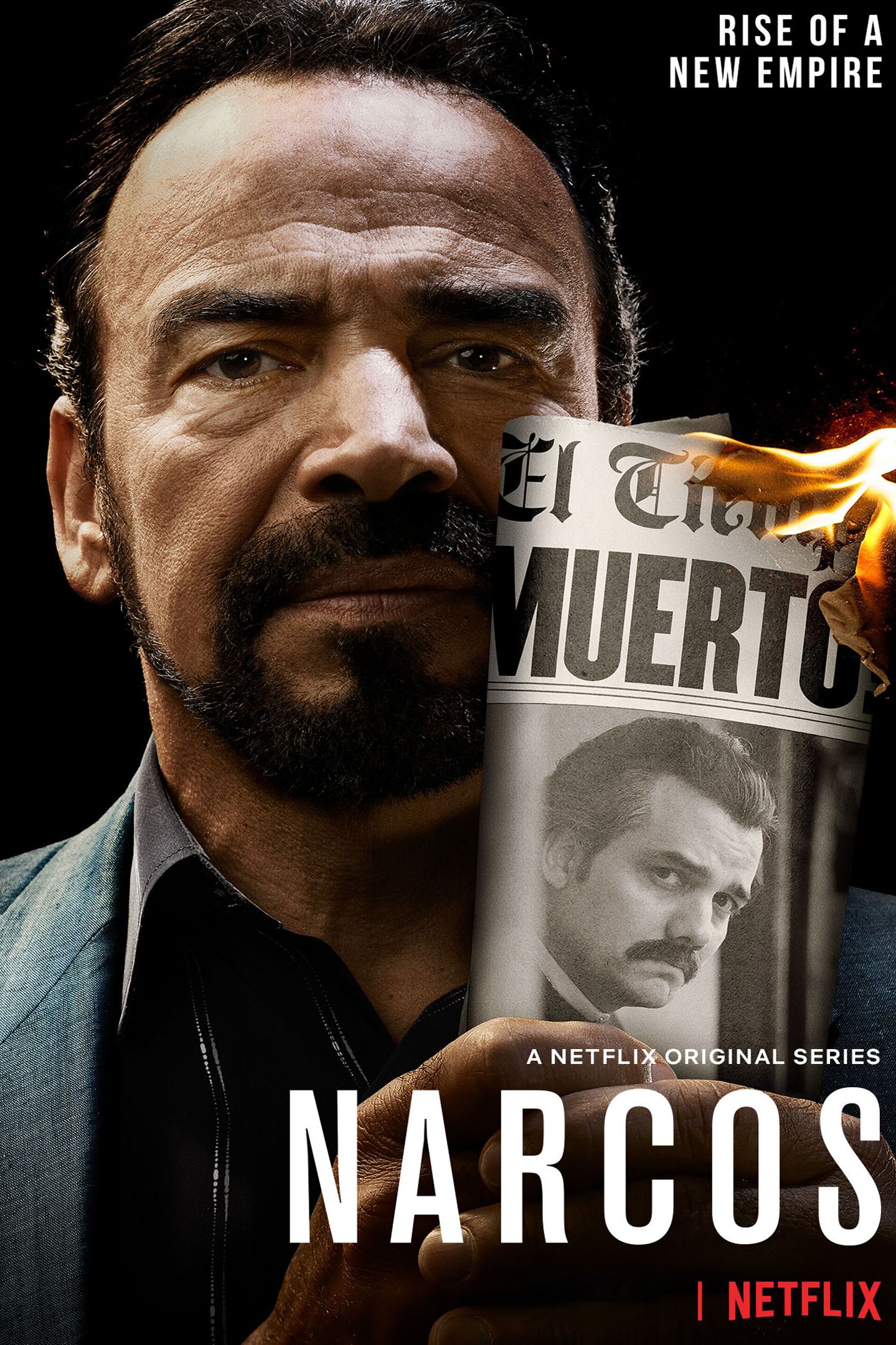
Narcos
Narcos is a crime-drama series created for Netflix based on the true story of Pablo Escobar, one of the wealthiest and most powerful drug cartel leaders to have ever lived. The show explores Escobar’s origins, rise, and subsequent fall in Colombia and beyond through the creation of a potent new drug known as cocaine and his other ruthless illegal business practices.
- Cast
- Boyd Holbrook , Damian Alcazar , Wagner Moura , Juan Sebastián Calero , Jorge Monterrosa , Alberto Ammann , Raúl Méndez , Juan Murcia , Pedro Pascal , Francisco Denis , Paulina Gaitan , Paulina Garcia
- Release Date
- August 28, 2015
- Seasons
- 3



